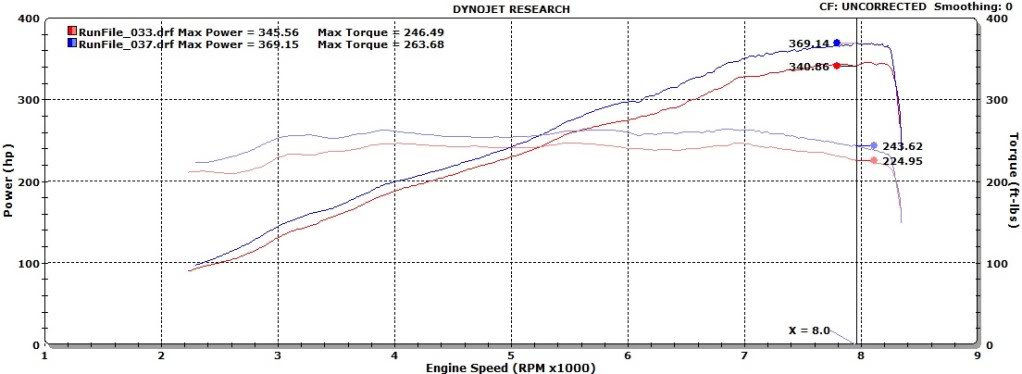Excerpts from Article
Continued from
this Dyno Database entry.
DAY ONE
Yesterday, our goal was to establish a solid and repeatable baseline (we threw
out the lowest outlines). And then to enable the Procede tune and PWM Meth
system. At this time, all the Procede did was meter methanol spray and adjust
ignition advance as a function of measured methanol flow. No changes were made
to AFR targeting. In the end, we came up with these results:
Analysis
Properly metering methanol as a function of Throttle angle and Airflow was key
to keeping the DME happy and code free. If methanol is injected like an on/off
switch, the DME will trigger various fuel control codes. Caused by having to
react to big AFR swings at meth spray onset. So by injecting progressively (via
Aquamist PWM valve), the DME sees no such plausibility issues. The extra meth
naturally provides a big cooling advantage, dropping measured inlet air temps
(IATs) by approx 20 deg C (35 deg F)! Just spraying meth alone picked up approx
10whp at high RPM (not shown). But that is only part of the story. Methanol also
increases octane much like running race fuel. This allowed us to run 4-6 degrees
more ignition advance, getting us right to the point of maximum thermal
efficiency or Min Advance for Best Torque (MBT for short). This is where every
engine "wants" to run. However, real world constraints (temp and octane) usually
prevent this. This is why a stock "420bhp" m3 doesn't really make 420whp on the
road. It also explains why stock baseline dynos, from
car-to-car/condition-to-condition/octane-to-octane can vary from 320whp to
350whp. Methanol allows us to "tune" the environment which, in turn, allows us
to tune the engine the way it wants to be tuned for maximum. And do it more
safely than just trying to tune conventionally (ie, making the tune more
aggressive without running meth or race gas, etc,.). So, at the end of the first
day, running methanol and the extra ignition advance gave us not only big power
gains, but also made the power perfectly consistent and 100% immune to heat
soak. Which means that power gains in worse conditions will be every greater.
But even in these temperate conditions, we saw gains of:
|
